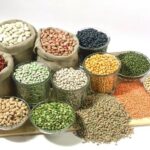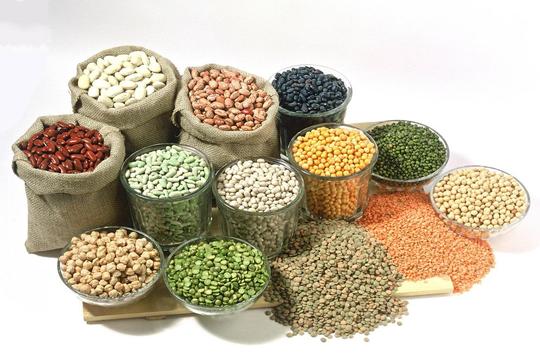Increasing the amount of fibre in your diet can help you manage your diabetes. It also helps keep your gut healthy and can reduce your blood cholesterol, which lowers your risk of cardiovascular disease. It can also be beneficial if you’re trying to maintain a healthy weight.
The Scientific Advisory Committee on Nutrition (SACN), who looked at the role of fibre in maintaining good health, published these new recommendations in July 2015:
- Adults 16 years and over: 30g per day
- 11-16 years: 25g per day
- 5-11 years: 20g per day
- 2-5 years: 15g per day
Currently, the average adult in the UK consumes only around 19g per day.
Here we’ll help you identify foods that are high in fibre and simple ways you can increase your intake. Remember that you’ll also need to increase the amount you drink. If you have diabetes, or are just managing your weight, the best options for drinks are water, no-calorie/low-calorie sugar-free drinks, unsweetened tea, or coffee with milk.
What is fibre?
Dietary fibre is a type of carbohydrate that’s found in plant-based foods. It’s not absorbed or digested by the body but it plays an important role in maintaining good health. There are two types of dietary fibre – soluble and insoluble. Most foods contain both types but are usually richer in one type or the other.
Soluble fibre
Found in oat, oat bran, linseeds, barley, fruit and vegetables, nuts, beans, pulses, soya, and lentils.
Insoluble fibre
Good sources include: wholemeal bread, bran, wholegrain cereals, nuts, seeds, and the skin of some fruit and vegetables.
Why is fibre important?
Having diabetes can increase your risk of cardiovascular disease. Evidence shows that increasing your intake of fibre, especially cereal and wholegrains, can help reduce the risk of cardio-metabolic diseases (which includes cardiovascular disease, insulin resistance, and obesity) and colo-rectal cancer.
Higher intake of oat bran also leads to lower cholesterol levels and lower blood pressure.
Dietary fibre absorbs fluid and increases the bulk of waste matter, making your stools softer and easier to pass. Foods higher in soluble fibre have a particular role in reducing blood cholesterol. Increasing your dietary fibre can also help with managing your weight. These foods are filling and most are lower in glycaemic index (GI), which can help to control your appetite and have less of an effect on blood glucose levels.
How to increase your daily intake of fibre
To achieve the new SACN guidelines, we need to aim for at least five portions of fruit and vegetables a day. We need to try to base our meals around starchy carbohydrates, choosing wholegrain varieties and include high-fibre snacks.
Here are some ideas, along with their fibre and carb content, to get you started
To increase your fibre intake even further, add salad or vegetables to your lunch or main meal.
High-fibre snacks
- Plain oat cakes
- Fruits
- Nuts
- Dried fruit
- Yoghurt with berries and pumpkin seeds
Keep an eye on the portion sizes when you’re eating these snacks, especially if you’re watching your weight.
Children and fibre
You can help your children to increase their fibre intake with the following ideas:
- Offer fruits or a small portion of dried fruit as a snack.
- Blitz vegetables in a tomato sauce and serve with pasta. Why not introduce them to whole-wheat pasta? Perhaps start with a mixture of white and whole-wheat.
- Offer wholegrain cereals for breakfast, or even add some high-fibre, bran-based cereal to their favourite choices.
- Try a smoothie made with milk and frozen berries as a snack or frozen yoghurt with berries as a sweet treat.
Shopping tips
You can compare the back of pack nutritional labels on pre-packed foods and choose the food with a higher amount of fibre. At times this information may not be available, but there are other ways of choosing foods high in dietary fibre:
- Look for words such as ‘wholemeal’, ‘whole-wheat’, and ‘wholegrain’ on labels. Wholegrain carbohydrates tend to be higher in fibre and lower in GI, which means they have less of an effect on your blood glucose levels.
- Choose wholemeal, seeded, or multi-grain bread – these are higher in fibre than white varieties. Brown bread is not as high in fibre as wholemeal.
- Instead of white pasta or rice, choose the brown/whole-wheat type.
- Go for beans, pulses, and lentils – buy tinned to save on cooking time and add to casseroles, soups, salads, and curries.
- Choose oat-based, bran, or wholegrain breakfast cereals.
- Buy a selection of interesting and seasonal fruit and vegetables to help you aim for your five-a-day target.
- Couscous and quinoa, which are wholegrains, are a great source of fibre.
Aiming for 30g a day may feel like a lot. As long as you try to increase your intake, aiming to meet the recommendation slowly, you’ll be on the right path. Always speak to your healthcare professional before changing your diet.





